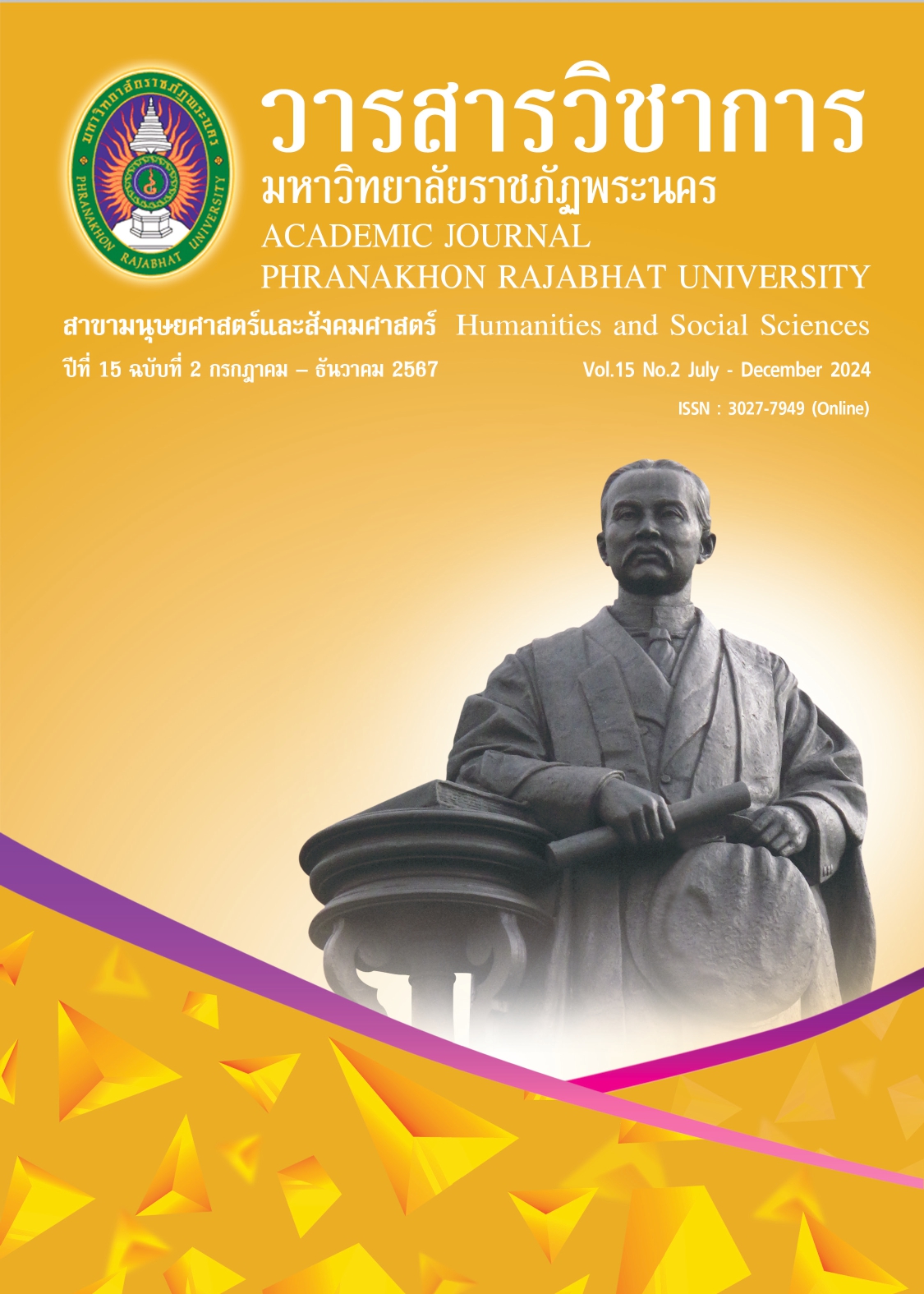GUIDELINES FOR RESOLVING CONFLICTS IN XINJIANG UYGUR AUTONOMOUS REGION IN THE PEOPLE'S REPUBLIC OF CHINA
Keywords:
Conflict, Uyghurs, Xinjiang Uyghur Autonomous RegionAbstract
The objectives of this academic article were to: 1) present the origins of the conflict and 2) propose guidelines to resolve the conflict in the Xinjiang Autonomous Region of the People's Republic of China. The analysis found that the conflict between the Chinese government and the Uyghurs in the Xinjiang Uyghur Autonomous Region is not solely a matter of race but is also intricately linked to religion, making the situation particularly delicate. Poor management of these two aspects could lead to ongoing problems with endless consequences. The origins of the conflict between the Chinese government and the Uyghurs in the Xinjiang Autonomous Region can be attributed to 1) the Chinese government's divide and rule policy, 2) Chinese policies toward the Xinjiang Uyghur Autonomous Region, 3) the rise of Pan-Turkism and Pan-Islamism, and 4) the collapse of the Soviet Union.
Guidelines for resolving conflicts in the Xinjiang Autonomous Region include the following: 1) the Chinese government should clearly define the terms “extreme,” "extremism," "separatism," and "terrorism" before implementing policies to suppress or eliminate such ideas, 2) promote trade among the Uyghurs to eliminate the perception of second-class citizenship, 3) the Chinese government should create jobs for Uyghurs that align with their skills and social costs, 4) the Chinese government should sincerely accept and promote the identity of Uyghur Muslims through social media channels, 5) Chinese leaders should personally engage with the Uyghur community to demonstrate sincerity and build mutual trust, 6) the Chinese government should clarify the issue of Uyghur detention camps, which is a topic of global concern, 7) The Chinese government should open a forum to listen to opinions and reflect different viewpoints, which can then be presented to Chinese leaders, and 8) Uyghurs should turn the crisis into an opportunity by promoting tourism to share their identity and history with the world.
References
Aree, S. (2019). Revealing the story behind the Uyghur problem: looking through the lens of Chinese studies scholars. Retrieved from https://thestandard.co/uyghurs-problem/ [2023, 7 Sep.] (in Thai)
BBC Thai. (2018). Uighurs: Muslims in Xinjiang reveal their children were taken away by China to adjust their attitudes. Retrieved from https://www.bbc.com/thai/international-48938021 [2023, 5 Sep.] (in Thai)
BBC Thai. (2022). Uyghurs: Get to know the Muslim minority in the United States. Accusing China of genocide. Retrieved from https://www.bbc.com/thai/international-61591067 [2024, 13 Jan.] (in Thai)
Chaiyang, P. (2010). China. Retrieved from https://www.baanjomyut.com/library/china/ [2023, 25 Dec.] (in Thai)
Gerin, R. (2023). Uyghur Exile Pursues Life in Turkey After Taunts and Torture Back in China. Retrieved from https://www.rfa.org/english/news/uyghur/exile-pursues-life-in-turkey-after-taunts-and-torture-back-in-china-07312015153931.html [2024, 10 Feb.] (in Thai)
Khumho, S. (2009). Asia. Bangkok: PBC. (in Thai)
Kitchainukul, P. (2020). Songjiang Mosque. Retrieved from https://readthecloud.co/songjiang-mosque-shanghai/ [2023, 17 Nov.] (in Thai)
Matichon Online. (2021). Xinjiang, the swallowed land (roots). Retrieved from https://www.matichon.co.th/foreign/news_2787887 [2023, 10 Sep.] (in Thai)
MGR Online. (2014). Chinese leader surprises, visit the Xinjiang region. Retrieved from https://mgronline.com/china/detail/9570000048087 [2024, 10 Feb.] (in Thai)
MGR Online. (2015). China tightens control over Ramadan Fasting is prohibited in Xinjiang. Retrieved from https://mgronline.com/china/detail/9580000069414 [2024, 10 Feb.] (in Thai)
Ngamlamom, W. (2015). Conflict Theory. Retrieved from http://learningofpublic.blogspot.com/2015/09/conflict-theory.html. [2024, 17 Feb.] (in Thai)
Phukaphan, P. (1999). Conflict management. Bangkok: Petchkul.
Post Today. (2021). When the West exposes China's bad behavior with people in Xinjiang. Retrieved from https://www.posttoday.com/world/648878. [2023, 8 Sep.] (in Thai)
Ropers, N. (2014). Right to Self-Determination. Retrieved from https://peaceresourcecollaborative.org/wp-content/uploads/2020/04/IPP-13.pdf [2024, 25 Feb.] (in Thai)
The MATTER. (2018). Who are Uighurs? How to live in China? Looking at human rights problems in Xinjiang Uighurs. Retrieved from https://thematter.co/quick-bite/xinjiang-uyghur-human-rights/123618. [2024, 15 Jan.] (in Thai)
Wikipedia. (2016). Administrative division map of China Areas that China claims over other territories are shown in colored bands. Retrieved from https://th.wikipedia.org/wiki/file:China_(%2Bclaims_hatched),_administrative_divisions_-_th_-_colored.svg [2024, 10 Feb.] (in Thai)
Wikipedia. (2022). Xinjiang Uygur Autonomous Region. Retrieved from https://en.wikipedia.org/wiki/Xinjiang [2024, 10 Feb.] (in Thai)
Wikipedia. (2023). China. Retrieved from https://th.wikipedia.org/wiki/China. [2023, 6 Sep.] (in Thai)
Wisalaporn, S. (1991). Conflict: management for creativity. Bangkok: Love & Live Press. (in Thai)
Downloads
Published
How to Cite
Issue
Section
License
Copyright (c) 2024 Academic Journal Phranakhon Rajabhat University

This work is licensed under a Creative Commons Attribution-NonCommercial-NoDerivatives 4.0 International License.
"บทความวิชาการในวารสารฉบับนี้ ถือเป็นความรับผิดชอบของผู้เขียนเท่านั้น"
สงวนลิขสิทธิ์ตามพระราชบัญญัติลิขสิทธิ์



